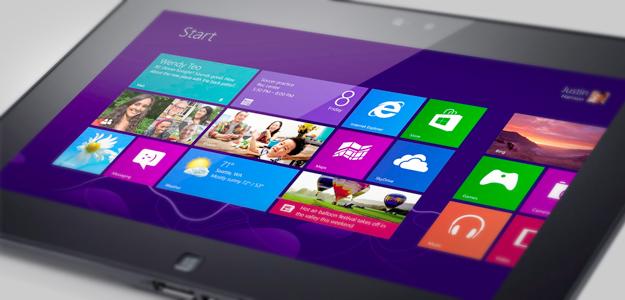 Windows 8 is a new approach to personal computing. It reverses Microsoft’s earlier decision to push the old Windows user experience down to phones. The new Windows 8 operating system takes a user interface that began on the Zune and matured on Windows Phone 7 products and pushes it up to PCs. I anticipate that Apple will do the same thing with its iOS. Windows 8 capabilities suggest that the best products for this operating system will be in a different configuration than products designed for previous versions of Windows.
Windows 8 is a new approach to personal computing. It reverses Microsoft’s earlier decision to push the old Windows user experience down to phones. The new Windows 8 operating system takes a user interface that began on the Zune and matured on Windows Phone 7 products and pushes it up to PCs. I anticipate that Apple will do the same thing with its iOS. Windows 8 capabilities suggest that the best products for this operating system will be in a different configuration than products designed for previous versions of Windows.
Initially new Windows 8 products likely will emulate either Apple products (particularly the iPad) or look like existing Windows products. I’ve been in production with Windows 8 for some months now, and I’m betting that over the next 24 months, another class of product emerges that better showcases Windows 8’s unique flexibility.
All-in-Ones
You’d think all-in-ones would be perfect for Windows 8. That would be true except for one important thing: Screen size for this class has moved to 27 inches, and users typically place anything in that size range beyond an easy arm’s reach for comfortable viewing. You’ll likely find, as I did, that a good touchpad is more useful than a touch screen because you aren’t constantly leaning forward, stretching for the screen. And you won’t be smearing fingerprints all over the display. This last trait is annoying enough on a tablet, but wait until you see fingerprints all over a larger piece of glass. So for 20-inch and smaller screens, touch is fine, but for 25 inches and above, you’ll likely prefer a touchpad. A touchpad also saves you money because it is a cheaper option. But neither a touch screen nor a touchpad is ideal.

Laptops
A touch-screen laptop can work just fine; however, you’ll want it to be light and, from time to time, you’ll still want a good touchpad. In fact, you may find that the touchpad will be more important than the touchscreen for operations such as cut and paste, which are much easier with a touchpad. The other issue is balance; some notebooks are weighted incorrectly for a touch screen. Because this kind of screen is typically heaver, the laptop tilts back when you press on the screen.

So I’d recommend screens 13.3 inches or larger with a great multi-touchpad as a requirement. A touchscreen is my strongly recommended option for the cool factor.
Tablets
I’ve been using an 11.6-inch Samsung Windows 8 tablet for months. The size is painfully small when working with Office, which is as close as we’ll likely get to a “killer app” before launch (Microsoft is being secretive about the other apps). After using the product, several original equipment managers (OEMs) are talking about creating 15-inch to 20-inch tablets.

Hybrids and convertibles
A hybrid is a tablet that has a keyboard you can disconnect, and a convertible morphs from tablet to laptop while the keyboard stays connected, but hidden under the screen when not in use. We already know that people dislike sizes below 13.3 inches in volume for laptops, or more than 10 inches in tablets. Your choice will depend on how you want to use the product.

Windows to Go
The most undersold part of the Windows 8 platform is Windows To Go, and it is initially only available to Windows buyers. It places the entire Windows image on a USB key that you insert to run your personal Windows desktop on any piece of compliant hardware. As long as hardware is available for your use, this is the perfect portability, because your key files move with you regardless of whether you are connected to the network of a supported PC device. Windows To Go should give you the ultimate in flexibility. The ideal devices will have special slots, so you can leave the USB connected without it dangling and getting broken or lost during travel.
Windows 8 will herald a new class of PCs using unique new interfaces such as Kinect, and they’ll come in ever more flexible form factors. In short, if you thought the change in Windows 8 was extreme, wait until you see the hardware that will eventually, over the next several years, evolve as a result of this new platform.
I remain in search of the quintessential Windows 8 hardware. Let me know if you think you’ve seen it.
Editors' Recommendations
- The Windows transition to Arm just found its missing puzzle piece
- Microsoft is adding a controversial app to Windows 11
- The Meta Quest 3 will get an exciting new type of app
- 4 high-end features Windows laptops still have over MacBooks
- If you use a VPN, don’t skip this important Windows 11 update


